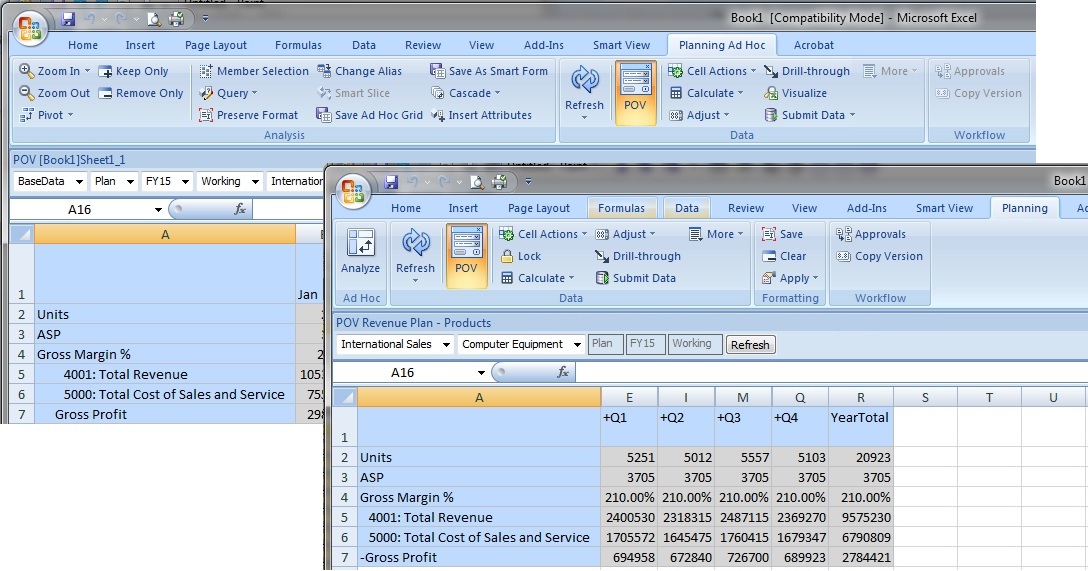Ribbons
From Office applications, you access Oracle Smart View for Office functionality through ribbon commands.
Note:
Smart View is designed to work optimally with the ribbon structure of Microsoft Office 2010 or later.
The Smart View ribbon, which contains commands for common Smart View operations and for Oracle Hyperion Reporting and Analysis operations, is always present.
When you connect to a data source (other than Reporting and Analysis), the corresponding data source ribbon is also displayed. Each ribbon displays only the commands supported for that data source and mode. For example, in the following illustration for Oracle Hyperion Planning, when you access a Planning form, the Planning ribbon is displayed; when you enter ad hoc analysis (see Ad Hoc Analysis), the Planning Ad Hoc ribbon is displayed.

The ribbons are:
-
Smart View
-
Essbase
-
HFM (Oracle Hyperion Financial Management )
-
HFM Ad Hoc
-
Planning
-
Planning Ad Hoc
-
FCCS (Financial Consolidation and Close)
-
FCCS Ad Hoc
-
TRCS (Tax Reporting)
-
TRCS Ad Hoc
-
Oracle BI EE
-
Others—If the administrator has installed and configured your Smart View system with extensions, there may be other ribbons; for example:
-
Narrative Reporting
-
Narrative Reporting Ad Hoc
-
Disclosure Management
-
Strategic Finance
-
Video
| Your Goal | Watch This Video |
|---|---|
|
Learn about navigating in Smart View, including working with ribbons. |